Assembling the tree of life
Scientists are organizing knowledge of all living things into a single evolutionary tree.
By Emily Sohn
It’s easy to see how you’re related to your parents, grandparents, brothers, sisters, and cousins. It’s not so easy to see how you’re related to apple trees, worms, or elephants.
From algae to zebras, all living things on Earth have a common ancestor. The Tree of Life Project aims to show how these species are related to one another by putting them into a family tree. Biologists and other scientists all over the world are working to identify and sort Earth’s organisms—from plants to microbes to animals, living or extinct—to see how they fit together.
 |
|
In the Tree of Life Project, scientists are working out how different organisms, past and present, are related to one another.
|
By organizing knowledge of living things into a single evolutionary tree, researchers hope to create a tool that will help them unravel the underlying rules that drive life on Earth, in all its diversity.
“There are many, many things we can understand better if we realize that the organism we’re looking at doesn’t exist in a vacuum,” says Scott Lanyon. “It’s actually related to other things.” Lanyon is director of the Bell Museum of Natural History in Minneapolis.
Millions of species
So far, scientists have identified about 1.7 million species around the world. At least 4 million more species remain to be discovered. And these numbers don’t include the millions of species, such as dinosaurs, that have already gone extinct.
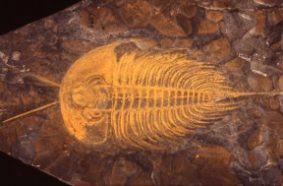 |
|
This 515-million-year-old fossil of a trilobite was found in eastern Pennsylvania. Researchers are studying such fossils to figure out the evolutionary history of these creatures.
|
| Photo by Bruce S. Lieberman, University of Kansas |
Amazingly, this diversity apparently arose from a single primitive organism that lived roughly 3.5 billion years ago. Over time, cells formed, changed, and merged. Groups of cells developed into distinct organisms, splitting into different species that could not reproduce with each other.
For most of history, no one was around to record what was happening. So, there are lots of gaps in the record and many questions about how, when, and where species split.
Extinct creatures aside, scientists have plenty to learn about links among the different species of plants, microbes, and animals that are living today. Biologists who specialize in studying ants, frogs, plants, monkeys, or some other group of living things, for example, don’t always know how their own discoveries might relate to findings about other species.
Male red-winged blackbirds, for example, are more brightly colored than females. “To understand why, it’s helpful to know what the closest relatives to redwings do,” Lanyon says. “But to answer these questions, we have to delve into the past. We have to talk about history.”
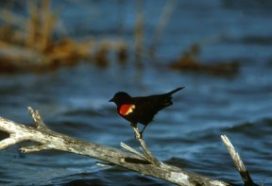 |
|
Adult male red-winged blackbirds have a distinctive bright-red patch on their wings. Females have no such marking.
|
| Kent Olsen, U.S. Fish and Wildlife Service |
Katja Schulz, an entomologist at the University of Arizona, agrees. “It can be hard to make sense of dragonflies with weird wings or parasitic worms with weird hooked mouths,” she says “But when you put a historical spin on it, you can begin to think about what might have happened along the way.”
DNA tests
Getting a detailed look at the past has become possible because of recent advances in our understanding of the genetic material DNA, which is found in all cells.
Changes, or mutations, in DNA drive evolution. Members of the same species start with lots of DNA in common. But as species split, their DNA becomes less similar. Using new technologies, scientists can compare stretches of DNA to find out the point at which two organisms split from their common ancestor.
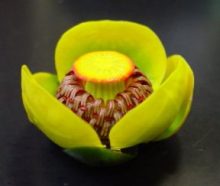 |
|
By studying the DNA of the yellow water lily, researchers are obtaining clues about the evolution of flowering plants.
|
| Yi Hu, Penn State Eberly, College of Science, Department of Biology |
Supercomputers do the math required for making such comparisons. But even computers have limits.
“If you have DNA for four species, it doesn’t take a computer long [to make a comparison],” Lanyon says. “But when you have thousands of species, you quickly get to the point where computers can’t handle it.”
“This is a huge nightmare for computer scientists,” he adds. “We’re producing data much faster than we can analyze it in a sophisticated fashion.”
So, there’s a lot of research aimed at improving computers and the methods that they use to make comparisons.
Even though it’s far from complete, the evolutionary tree of life can be a great resource for scientists, Lanyon says.
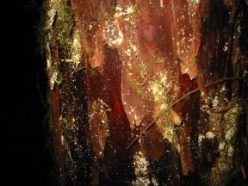 |
|
A compound in the bark of the Pacific yew tree helps fight cancer.
|
| © 2005 Walter Siegmund |
Several decades ago, for example, scientists found a compound in the bark of the Pacific yew tree that helps fight cancer. Unfortunately, this yew species contains only tiny amounts of the stuff. By checking the tree’s closest relatives, researchers were able to find another species that produces a larger supply of the compound.
Web project
As some scientists struggle to assemble a complete evolutionary tree, researchers at the University of Arizona are putting what is known so far into a format that people can easily understand and navigate.
Visitors to the Tree of Life Web Project Web site (tolweb.org/tree/ can start at the root of the tree, where life began, and work their way up and down the branches. They can also zero in on specific families and species to read background information and see pictures.
At this point, the site contains more than 4,000 pages. And it’s getting bigger all the time.
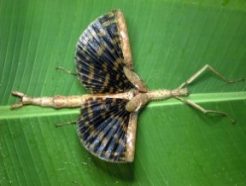 |
|
Insects known as walking sticks mimic twigs to hide from predators. Researchers have discovered that some walking stick species lost their ability to fly millions of years ago, and then later regained it.
|
| Insect Molecular Genomics Lab, Brigham Young University; photo by Allison Whiting/BYU |
“When you see that humans and jellyfish share a common ancestor,” Schulz says, “it makes you aware that all life on Earth is one big community.” Schulz is the project’s managing editor.
Only experts can add information to the evolutionary tree, but anyone can contribute to the Web project. With your teachers, you can build “treehouses”—special pages on the Tree of Life Project Web site where you can post your own scientific studies, poems, pictures, stories, or art projects.
The only requirement is that your treehouse must be about organisms in some way, Schulz says. Each contribution also has to be original.
Going Deeper:







